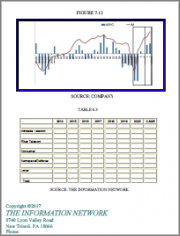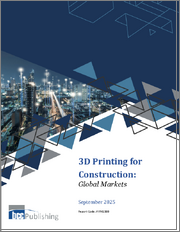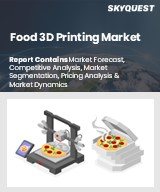
|
시장보고서
상품코드
1800255
PBF 공정 3D 프린팅 기술 시장 : 예측(2025-2030년)Powder Bed Fusion Process 3D Printing Technology Market - Forecasts fom 2025 to 2030 |
||||||
PBF 공정 3D 프린팅 기술 시장은 CAGR 20.16%로 2025년 33억 9,300만 달러에서 2030년에는 84억 9,800만 달러로 성장할 것으로 예측됩니다.
파우더 베드 융합(PBF) 공정 3D 프린팅 세계 시장은 맞춤형 제품에 대한 수요 증가와 항공우주, 자동차, 헬스케어 등 다양한 산업 분야에서 3D 프린팅 기술 채택이 증가함에 따라 2025-2030년 사이에 강력한 성장세를 보일 것으로 예측됩니다. 채택이 그 원동력입니다. PBF는 레이저 또는 전자빔을 사용하여 분말 재료를 층별로 선택적으로 융합하는 적층 가공 공정으로 복잡한 형상을 고정밀도로 제조하는 데 탁월합니다. 이 시장은 재료와 소프트웨어의 발전, 경량화 및 고성능 부품에 대한 수요에 의해 주도되고 있습니다. 북미는 강력한 산업 및 기술 인프라를 바탕으로 선두를 달리고 있으며, 아시아태평양은 급격한 성장이 예상됩니다. 높은 설비 비용과 재료의 제약 등을 꼽을 수 있습니다.
시장 성장 촉진요인
맞춤형 제품에 대한 수요 증가
맞춤형 제품에 대한 소비자 수요 증가는 PBF 3D 프린팅 시장의 주요 촉진요인입니다. PBF는 최소의 리드타임과 비용으로 맞춤형 부품을 생산할 수 있어 맞춤형 솔루션을 원하는 산업에 적합합니다. 헬스케어 분야에서는 PBF를 통해 환자 맞춤형 임플란트, 보철물, 수술기구를 제작할 수 있어 치료 성과 향상과 비용 절감을 실현할 수 있습니다. 복잡한 형상을 형성하는 이 기술의 정밀도는 복잡한 수술을 지원하고, 의료 응용 분야에서의 채택을 촉진하며 시장 성장을 가속하고 있습니다.
항공우주 및 자동차 분야에서의 채용
항공우주 및 방위 산업은 PBF 3D 프린팅의 주요 채택 기업으로, 연비 효율과 성능을 향상시키는 가볍고 복잡한 부품을 제조할 수 있는 능력을 활용하고 있습니다. 미국항공우주국(NASA)은 로켓 엔진 부품 제조에 PBF를 사용하고 있으며, 이는 항공우주에서 PBF의 중요한 역할을 강조하고 있습니다. 마찬가지로 자동차 분야에서도 PBF는 경량 부품의 시제품 제작 및 제조에 적용되어 차량 중량 감소 및 효율성 향상을 도모하고 있습니다. 이들 산업에서 이러한 부품에 대한 수요가 증가하면서 시장 확대에 박차를 가하고 있습니다.
재료와 소프트웨어의 발전
금속 합금 및 복합재료 등 PBF에 적합한 재료의 끊임없는 발전으로 이 기술의 능력이 확대되고 있습니다. 신소재는 인쇄 부품의 강도, 내구성, 생체적합성을 향상시키고, 헬스케어 및 항공우주 분야로 적용 범위를 넓혀가고 있습니다. 개선된 소프트웨어 도구는 설계 및 생산 공정을 간소화하고 효율성과 접근성을 향상시켰습니다. 이러한 기술 혁신은 PBF의 범용성과 비용 효율성을 높여 다양한 산업 분야에서 채택을 촉진하고 시장 성장을 뒷받침하고 있습니다.
시장 성장 억제요인
PBF 3D 프린팅 시장은 높은 장비 비용으로 인해 소규모 제조업체나 비용에 민감한 지역에서는 도입이 제한될 수 있습니다. 또한, 적절한 분말 재료의 가용성도 제한적이기 때문에 적용 범위가 제한되고 제조 비용이 상승합니다. 또한, PBF 시스템 운영 및 최적화를 위해 숙련된 전문가가 필요하다는 점도 특히 신흥 시장에서는 장벽이 되고 있습니다. 비용 효율적인 솔루션과 인재 육성을 통해 이러한 과제를 해결하는 것이 지속 가능한 성장에 필수적입니다.
목차
제1장 주요 요약
제2장 시장 현황
- 시장 개요
- 시장의 정의
- 조사 범위
- 시장 세분화
제3장 비즈니스 상황
- 시장 성장 촉진요인
- 시장 성장 억제요인
- 시장 기회
- Porter의 Five Forces 분석
- 업계 밸류체인 분석
- 정책 및 규제
- 전략적 제안
제4장 기술 전망
제5장 PBF 공정 3D 프린팅 기술 시장 : 컴포넌트별
- 서론
- 하드웨어
- 소프트웨어
- 서비스
- 재료
제6장 PBF 공정 3D 프린팅 기술 시장 : 기술별
- 서론
- Multi Jet Fusion
- Selective Laser Sintering
- Selective Laser Melting
- Electron Beam Melting
- 기타
제7장 PBF 공정 3D 프린팅 기술 시장 : 최종사용자별
- 서론
- 헬스케어
- 자동차
- 항공우주 및 방위
- 기타
제8장 PBF 공정 3D 프린팅 기술 시장 : 지역별
- 서론
- 북미
- 미국
- 캐나다
- 멕시코
- 남미
- 브라질
- 아르헨티나
- 기타
- 유럽
- 영국
- 독일
- 프랑스
- 스페인
- 기타
- 중동 및 아프리카
- 사우디아라비아
- 아랍에미리트(UAE)
- 기타
- 아시아태평양
- 일본
- 중국
- 인도
- 한국
- 대만
- 태국
- 인도네시아
- 기타
제9장 경쟁 환경과 분석
- 주요 기업과 전략 분석
- 시장 점유율 분석
- 합병, 인수, 합의, 협업
- 경쟁 대시보드
제10장 기업 개요
- EOS GmbH
- 3D Systems Inc.
- Nikon Corporation
- Renishaw plc
- HP Inc.
- General Electric
- Additive Industries
- Formlabs
- Prodways Group
- Stratasys Ltd.
제11장 조사 방법
LSH 25.09.05The powder bed Fusion process 3D printing technology market is expected to grow from USD 3.393 billion in 2025 to USD 8.498 billion in 2030, at a CAGR of 20.16%.
The global powder bed fusion (PBF) 3D printing market is projected to experience robust growth from 2025 to 2030, driven by increasing demand for customized products and the technology's adoption across industries such as aerospace, automotive, and healthcare. PBF, an additive manufacturing process that uses a laser or electron beam to selectively fuse powder materials layer by layer, excels in producing complex geometries with high precision. The market is propelled by advancements in materials, software, and the need for lightweight, high-performance components. North America leads due to its strong industrial and technological infrastructure, while Asia-Pacific is expected to grow rapidly. Challenges include high equipment costs and material limitations.
Market Drivers
Rising Demand for Customized Products
The growing consumer demand for customized products is a primary driver of the PBF 3D printing market. PBF's ability to produce tailored components with minimal lead time and cost makes it ideal for industries seeking bespoke solutions. In healthcare, PBF enables the creation of patient-specific implants, prosthetics, and surgical tools, improving outcomes and reducing costs. The technology's precision in forming intricate shapes supports complex surgeries, driving its adoption in medical applications and boosting market growth.
Adoption in Aerospace and Automotive
The aerospace and defense industry is a major adopter of PBF 3D printing, leveraging its ability to produce lightweight, complex parts that enhance fuel efficiency and performance. The National Aeronautics and Space Administration (NASA) uses PBF to manufacture rocket engine components, highlighting its critical role in aerospace. Similarly, the automotive sector employs PBF for prototyping and producing lightweight parts, reducing vehicle weight and improving efficiency. The increasing demand for such components across these industries is fueling market expansion.
Advancements in Materials and Software
Continuous advancements in PBF-compatible materials, such as metal alloys and composites, are expanding the technology's capabilities. New materials enhance the strength, durability, and biocompatibility of printed parts, broadening applications in healthcare and aerospace. Improved software tools streamline design and production processes, increasing efficiency and accessibility. These innovations make PBF more versatile and cost-effective, driving its adoption across diverse industries and supporting market growth.
Market Restraints
The PBF 3D printing market faces challenges due to high equipment costs, which can limit adoption among smaller manufacturers or in cost-sensitive regions. The availability of suitable powder materials is also limited, restricting the range of applications and increasing production costs. Additionally, the need for skilled professionals to operate and optimize PBF systems poses a barrier, particularly in emerging markets. Addressing these challenges through cost-effective solutions and workforce training will be critical for sustained growth.
Market Segmentation
By Technology
The market includes laser-based and electron beam-based PBF. Laser-based PBF dominates due to its precision and versatility in producing metal and polymer parts for aerospace and healthcare. Electron beam PBF is gaining traction for high-strength metal applications in aerospace and defense.
By End-User
The market is segmented into aerospace and defense, automotive, healthcare, and others. Aerospace and defense lead due to their demand for lightweight, complex components. Healthcare is a fast-growing segment, driven by customized implants and prosthetics. Automotive is expanding with applications in prototyping and lightweight parts.
By Geography
The market is segmented into North America, Europe, Asia-Pacific, South America, and the Middle East and Africa. North America holds the largest share, driven by its advanced aerospace and healthcare sectors, supported by NASA's adoption and a robust technological ecosystem. Asia-Pacific is expected to grow rapidly, fueled by expanding manufacturing and healthcare industries in countries like China and India. Europe, South America, and the Middle East and Africa are emerging markets, supported by increasing industrial investments.
The PBF 3D printing market is set for robust growth from 2025 to 2030, driven by demand for customized products, adoption in aerospace and automotive, and advancements in materials and software. Despite challenges like high costs and material limitations, the market's outlook is positive, particularly in North America and Asia-Pacific. Industry players must focus on cost-effective innovations, material development, and workforce training to capitalize on the growing demand for PBF 3D printing in high-precision, customized manufacturing.
Key Benefits of this Report:
- Insightful Analysis: Gain detailed market insights covering major as well as emerging geographical regions, focusing on customer segments, government policies and socio-economic factors, consumer preferences, industry verticals, and other sub-segments.
- Competitive Landscape: Understand the strategic maneuvers employed by key players globally to understand possible market penetration with the correct strategy.
- Market Drivers & Future Trends: Explore the dynamic factors and pivotal market trends and how they will shape future market developments.
- Actionable Recommendations: Utilize the insights to exercise strategic decisions to uncover new business streams and revenues in a dynamic environment.
- Caters to a Wide Audience: Beneficial and cost-effective for startups, research institutions, consultants, SMEs, and large enterprises.
What do businesses use our reports for?
Industry and Market Insights, Opportunity Assessment, Product Demand Forecasting, Market Entry Strategy, Geographical Expansion, Capital Investment Decisions, Regulatory Framework & Implications, New Product Development, Competitive Intelligence
Report Coverage:
- Historical data from 2020 to 2024 & forecast data from 2025 to 2030
- Growth Opportunities, Challenges, Supply Chain Outlook, Regulatory Framework, and Trend Analysis
- Competitive Positioning, Strategies, and Market Share Analysis
- Revenue Growth and Forecast Assessment of segments and regions including countries
- Company Profiling (Strategies, Products, Financial Information, and Key Developments among others.
Segmentation:
By Component
- Hardware
- Software
- Services
- Material
By Technology
- Multi Jet Fusion
- Selective Laser Sintering
- Selective Laser Melting
- Electron Beam Melting
- Others
By End-Users
- Healthcare
- Automotive
- Aerospace and Defence
- Others
By Geography
- North America
- USA
- Canada
- Mexico
- South America
- Brazil
- Argentina
- Others
- Europe
- United Kingdom
- Germany
- France
- Spain
- Others
- Middle East and Africa
- Saudi Arabia
- UAE
- Israel
- Others
- Asia Pacific
- China
- Japan
- India
- South Korea
- Indonesia
- Thailand
- Taiwan
- Others
TABLE OF CONTENTS
1. EXECUTIVE SUMMARY
2. MARKET SNAPSHOT
- 2.1. Market Overview
- 2.2. Market Definition
- 2.3. Scope of the Study
- 2.4. Market Segmentation
3. BUSINESS LANDSCAPE
- 3.1. Market Drivers
- 3.2. Market Restraints
- 3.3. Market Opportunities
- 3.4. Porter's Five Forces Analysis
- 3.5. Industry Value Chain Analysis
- 3.6. Policies and Regulations
- 3.7. Strategic Recommendations
4. TECHNOLOGICAL OUTLOOK
5. POWDER BED FUSION PROCESS 3D PRINTING TECHNOLOGY MARKET BY COMPONENT
- 5.1. Introduction
- 5.2. Hardware
- 5.3. Software
- 5.4. Services
- 5.5. Material
6. POWDER BED FUSION PROCESS 3D PRINTING TECHNOLOGY MARKET BY TECHNOLOGY
- 6.1. Introduction
- 6.2. Multi Jet Fusion
- 6.3. Selective Laser Sintering
- 6.4. Selective Laser Melting
- 6.5. Electron Beam Melting
- 6.6. Others
7. POWDER BED FUSION PROCESS 3D PRINTING TECHNOLOGY MARKET BY END-USER
- 7.1. Introduction
- 7.2. Healthcare
- 7.3. Automotive
- 7.4. Aerospace and Defence
- 7.5. Others
8. POWDER BED FUSION PROCESS 3D PRINTING TECHNOLOGY MARKET BY GEOGRAPHY
- 8.1. Introduction
- 8.2. North America
- 8.2.1. USA
- 8.2.2. Canada
- 8.2.3. Mexico
- 8.3. South America
- 8.3.1. Brazil
- 8.3.2. Argentina
- 8.3.3. Others
- 8.4. Europe
- 8.4.1. United Kingdom
- 8.4.2. Germany
- 8.4.3. France
- 8.4.4. Spain
- 8.4.5. Others
- 8.5. Middle East & Africa
- 8.5.1. Saudi Arabia
- 8.5.2. UAE
- 8.5.3. Others
- 8.6. Asia Pacific
- 8.6.1. Japan
- 8.6.2. China
- 8.6.3. India
- 8.6.4. South Korea
- 8.6.5. Taiwan
- 8.6.6. Thailand
- 8.6.7. Indonesia
- 8.6.8. Others
9. COMPETITIVE ENVIRONMENT AND ANALYSIS
- 9.1. Major Players and Strategy Analysis
- 9.2. Market Share Analysis
- 9.3. Mergers, Acquisitions, Agreements, and Collaborations
- 9.4. Competitive Dashboard
10. COMPANY PROFILES
- 10.1. EOS GmbH
- 10.2. 3D Systems Inc.
- 10.3. Nikon Corporation
- 10.4. Renishaw plc
- 10.5. HP Inc.
- 10.6. General Electric
- 10.7. Additive Industries
- 10.8. Formlabs
- 10.9. Prodways Group
- 10.10. Stratasys Ltd.



















